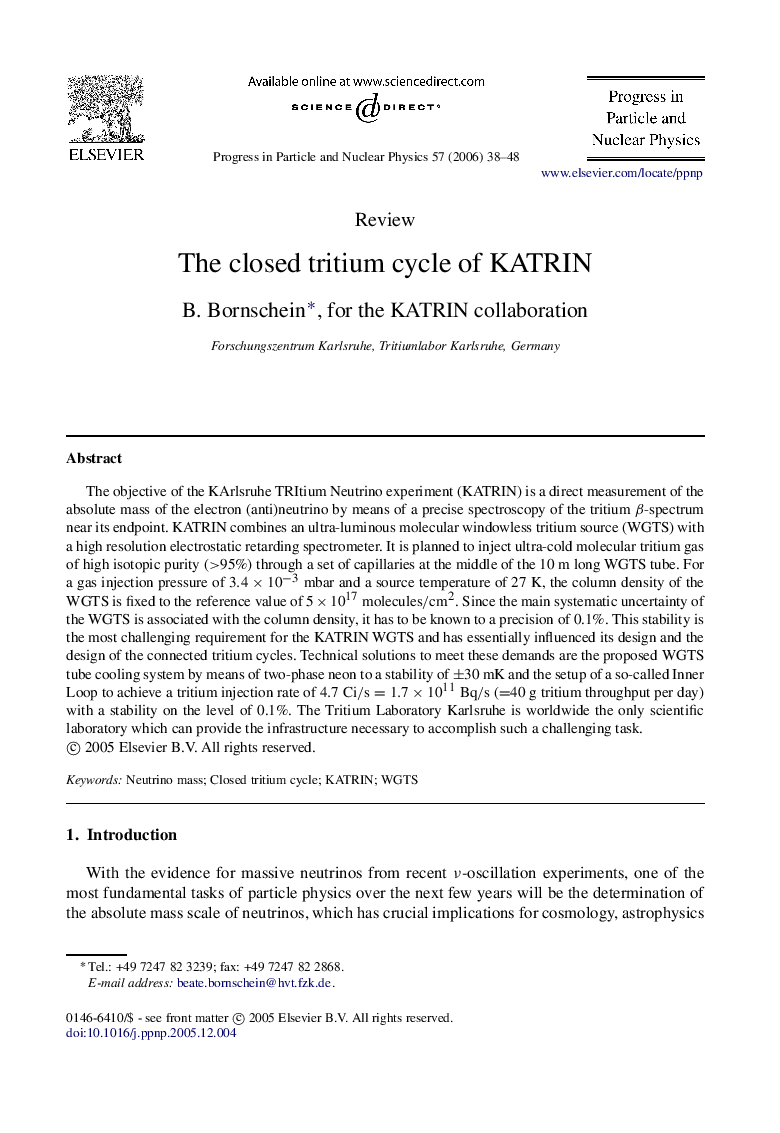| Article ID | Journal | Published Year | Pages | File Type |
|---|---|---|---|---|
| 1854681 | Progress in Particle and Nuclear Physics | 2006 | 11 Pages |
The objective of the KArlsruhe TRItium Neutrino experiment (KATRIN) is a direct measurement of the absolute mass of the electron (anti)neutrino by means of a precise spectroscopy of the tritium ββ-spectrum near its endpoint. KATRIN combines an ultra-luminous molecular windowless tritium source (WGTS) with a high resolution electrostatic retarding spectrometer. It is planned to inject ultra-cold molecular tritium gas of high isotopic purity (>95%) through a set of capillaries at the middle of the 10 m long WGTS tube. For a gas injection pressure of 3.4×10−3 mbar and a source temperature of 27 K, the column density of the WGTS is fixed to the reference value of 5×1017 molecules/cm2. Since the main systematic uncertainty of the WGTS is associated with the column density, it has to be known to a precision of 0.1%. This stability is the most challenging requirement for the KATRIN WGTS and has essentially influenced its design and the design of the connected tritium cycles. Technical solutions to meet these demands are the proposed WGTS tube cooling system by means of two-phase neon to a stability of ±30 mK and the setup of a so-called Inner Loop to achieve a tritium injection rate of 4.7 Ci/s=1.7×1011 Bq/s (=40 g tritium throughput per day) with a stability on the level of 0.1%. The Tritium Laboratory Karlsruhe is worldwide the only scientific laboratory which can provide the infrastructure necessary to accomplish such a challenging task.
